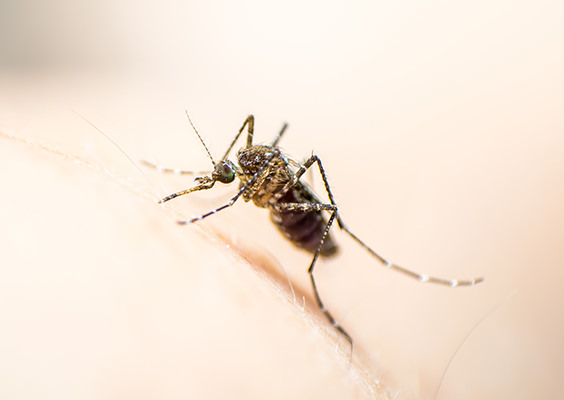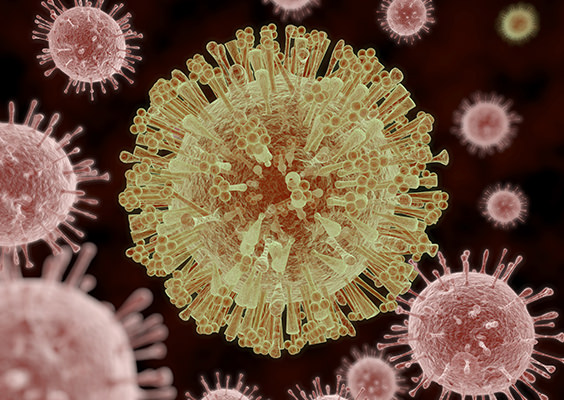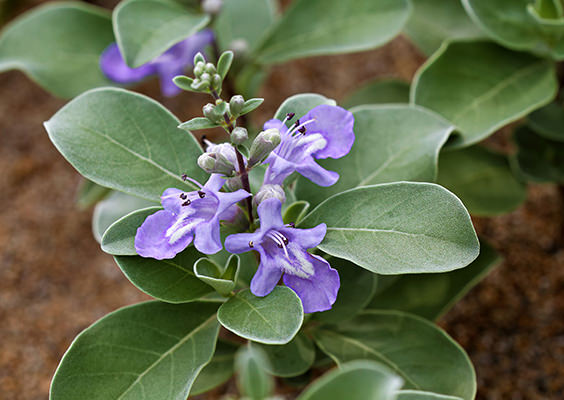I’ve hacked my way through a lot of jungles. I also live and practice medicine in South Florida. So I’m pretty familiar with mosquitoes.
Apart from the itchy bumps and skin irritation that even a “normal” bite brings, mosquitoes can spread malaria, yellow fever, dengue fever, West Nile virus and, of course, the Zika virus.

The problem is that Western medicine’s answer to the Zika public health scare is to kill off mosquitoes with man-made poisons that are far more dangerous than the virus.
Governments in a number of countries, including the U.S., are now even thinking about bringing back DDT, the insecticide that was banned in America in 1972 and later worldwide.
But even popular bug repellent brands are dangerous. Most contain an insect-repelling chemical called DEET — known to scientists as “N,N-Diethyl-m-toluamide” or “N,N-Diethyl-3-methylbenzamide.”
DEET acts as a neurotoxin to insects and mammals. That means it attacks the central nervous system, the same way as deadly nerve gas. So I wouldn’t suggest anyone to use it on their skin.
Instead, I recommend my patients use natural mosquito repellents.
In a minute, I’m going to tell you about what may be the best natural mosquito repellant in the world. It was introduced to me during a recent research trip to the tropic island of Bali.
But first, let’s take a look at the Zika threat…

The Zika virus is carried by mosquitoes and spread mostly through mosquito bites — although it can also be transmitted through sexual contact.
And only about one in five people infected with Zika become ill. The symptoms are usually mild and last no more than a few days. People usually don’t get sick enough to go to the hospital, and they very rarely die of Zika.1
But the infection has struck fear into public
health experts, because there is no cure for the Zika virus and appears to be linked to a recent spike of a serious birth defect in Brazil.2It’s also been linked to Guillain-Barré syndrome — an inflammation of the central nervous system.
But what really concerns me is the idea of bringing back DDT, or some other nasty mass insecticide, to wipe out mosquito populations.
You see, DDT has been linked to the development of Parkinson’s disease, as well as a higher incidence of leukemia and liver tumors.3,4
And it also has a devastating impact on the environment.
When DDT was made available to farmers in 1945, it was used to help eliminate malaria in Europe and North America.5,6
Between 1947 and 1971, millions of pounds of DDT were dumped into Los Angeles County sewers, which empted two miles offshore in the Pacific Ocean.
As a result, fish, birds and marine mammals developed high levels of contamination. It caused the near-extinction of bald eagles, pelicans and other birds that were unable to reproduce.
And anglers were warned to not eat fish caught offshore from Santa Monica to Seal Beach, because of the risk of cancer and neurological effects from high toxic levels.
But the problem is not just DDT.
A study, published by the journal Archives of Neurology, found that anyone who used at least one of eight different kinds of pesticides was more than twice as likely to get Parkinson’s.
The study revealed that if you used the insecticide permethrin, you were three times more likely to develop the disease.7
Permethrin is a common insect killer widely sold for use on clothing. It’s also put in a pharmaceutical cream meant to be rubbed on the skin to kill mites.
Another study by the University of California at Berkeley found that people exposed to maneb, a common pesticide used in gardens, were 75% more likely to develop Parkinson’s.8
Then there are the findings of the huge Agricultural Health Study. Researchers closely followed about 90,000 licensed pesticide applicators and their spouses, and monitored them for illnesses.
They found that those who used commercial herbicides/pesticides like rotenone or paraquat developed Parkinson’s disease 2.5 times more often than non-users.9
Safe and natural mosquito repellent — and it’s highly effective.

That’s why I always recommend the leaves of a small shrub called Simpleleaf Chastetree, which was first introduced to me by a master herbalist on Bali.
Scientists at India’s Annamalai University discovered it also kills mosquito larvae. In their experiments, Chastetree extract proved very powerful. A solution of just 9.25 parts per million was enough to kill half the larvae in their tests.10
The leaves also have antibacterial properties.11 Chastetree is very effective against tough-to-kill strains of bacteria.12 For example staph and strep, two bacteria which you’ve probably heard of, and which can cause damaging infections, can’t stand up to chastetree extracts.13
One research team discovered the plant’s extract also has anti-inflammatory effects.14
To reduce your risk of contracting the Zika virus and avoid brain damage from toxic pesticides, I also recommend that you:
- Stay away from products that claim to be “eco-friendly” or “natural,” when they clearly are not. For example, avoid pyrethroids. They’re similar to pyrethrins, which are natural insect-killing extracts from the plant chrysanthemum. But pyrethroids — like permethrin — are created in a lab.
- Also, stay away from “geraniol.” It’s billed as natural, because it’s made from roses, lemons and geraniums, but it’s been banned in Europe because of its toxicity to humans.
You can also put Chastetree leaves in your cabinets and pantry to keep bugs out of the kitchen. It acts as an insect repellent and works at my house.
Or, you can apply Chastetree powder – made from Chastetree leaves – on your skin to prevent insect bites and stings. It’s perfectly natural and has no toxic effects on humans.15
The powder is available as a supplement and you’ll find it in Asian specialty stores, often known as “Man Jing Zi.”
To Your Good Health,

Al Sears, MD, CNS
References
1. Centers for Disease Control and Prevention, National Center for Emerging and Zoonotic Infectious Diseases (NCEZID), Division of Vector-Borne Diseases (DVBD).
2. Ibid
3. Whelan E. “Toxic Terror.” 2nd ed. Buffalo, NY: Prometheus Books; 1993:125-129.
4. Coughlan, C, Walker, DI, Lohr, KM, Richardson, JR, Saba, LM, Caudle, WM, Fritz, KS, Roede, JR. Comparative Proteomic Analysis of Carbonylated Proteins from the Striatum and Cortex of Pesticide-Treated Mice. Parkinsons Dis. 2015;2015 :812532. Epub 2015/8/9. doi: 10.1155/2015/812532. PubMed PMID:26345149 PubMed Central PMC4546751
5. DDT and its derivatives, Environmental Health Criteria monograph No. 009, Geneva: World Health Organization, 1979, ISBN 92-4-154069-9.
6. Larson K (December 1, 2007). “Bad Blood”. On Earth (Winter 2008). Retrieved June 5, 2008.
7. Tanner C, et. al. “Occupation and Risk of Parkinsonism.” Arch. Neurol. 2009;66(9):1106-1113
8. Costello S, et. al. “Parkinson’s Disease and Residential Exposure to Maneb…” Am. J. Epidemiol. 2009; 169(8): 919–926
9. Tanner C, et. al. “Rotenone, Paraquat and Parkinson’s Disease.” Environ. Health Perspec, 2011.
10. Kannathasan K, et. al. “Larvicidal activity of fatty acid methyl esters of Vitex species against Culex quinquefasciatus.” Parasitol Res. 2008; 103(4): 999-1001.
11. Hossain M, et. al. “Antibacterial activity of Vitex trifolia.” Fitoterapia. 2001; 72(6): 695-697.
12. Kannathasan K, Senthilkumar A, Venkatesalu V. “In vitro antibacterial potential of some Vitex species against human pathogenic bacteria.” Asian Pac J Trop Med. 2011;4(8):645-8.
13. Geetha V, Doss A, Doss AP. “Antimicrobial potential of vitex trifolia linn.” Anc Sci Life. 2004;23(4):30-2.
14. Matsui M, et. al. “Characterisation of the anti-inflammatory potential of Vitex trifolia L. (Labiatae), a multipurpose plant of the Pacific traditional medicine.” J Ethnopharmacol. 2009; 126(3): 427-433.
15. Wuttke W. Dopaminergic action of extracts of Agnus Castus. Forschende Komplementarmedizen 1996;3:329-30.
